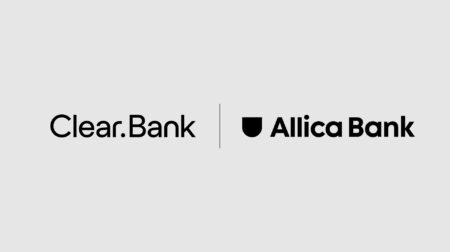Banks and digital assets: From naysayers to pivotal partners

Digital assets, Blockchain technology and the adoption of cryptocurrency are on the rise and we’re moving towards them being a part of the mainstream financial system in the UK. We’re seeing many fintech players including such technology into their offerings, and specialists are emerging to pioneer the technology and its introduction into the mainstream financial system.
To successfully integrate digital assets into the financial system, these existing and emerging providers require collaboration and support from banks, who are the fundamental gatekeepers of key financial infrastructure.
For example, although crypto is essentially its own ecosystem, it requires the support of banking infrastructure to enable consumers to access it easily via fiat on/off-ramps to enable the exchange from fiat currencies to cryptocurrencies, and vice versa, thus bringing monetary value into the crypto ecosystem.
In this article, we’ll discuss:
- The significance of digital assets and Blockchain technology and if it is truly here to stay
- The impact on the rest of the financial landscape as digital assets come into mainstream use
- The importance of collaboration between digital asset providers and banks, in order for digital asset participation to truly come to fruition
- The challenges that banks face when integrating and adopting digital assets
- Examples of how key providers are leading the way in bringing digital assets into the mainstream.
There are clear trends showing that digital assets and Blockchain technology have already penetrated the mainstream financial system. On the consumer side, we have already seen evidence such as in Nigeria, where 32% of people say they use or own cryptocurrency* and in the UK and Europe, where there is a clear shift to a broader range of demographics of those investing in crypto**. At an institutional level, Coinbase have IPO’ed, investors such as Blackrock now have exposure to crypto via various funds***, and multinationals such as Tesla openly back Bitcoin. Many believe this is just the start of Blockchain technologies making their mark on our mainstream financial system.
A key part of the mainstreaming of digital assets and Blockchain technology is existing players in the space that are looking to expand their reach and make waves in the traditional financial system, expanding their remit beyond just digital assets. For example, Silicon Valley giants and payment platforms such as PayPal and Square offer users a payments ecosystem that combines fiat and crypto.
However, as these platforms and their competitors extend their reach, they need to differentiate themselves to appeal to the crypto curious. That’s where the importance of partnering with banks comes in. With the backing of a bank, these platforms can move beyond agency banking and towards a true BaaS offering and provide end-users with a safe, secure and FSCS protected platform. This gives the look and feel of a traditional banking partner and thus elevates the provider to become an integral part of our mainstream financial system.
For banks and other traditional financial institutions, the biggest challenge when it comes to digital assets is learning how to interact and work with these kinds of decentralised technologies.
ClearBank is leading the charge on this, by working with the most regulated, secure and reputable firms in the crypto space, facilitating their emergence into the mainstream through ClearBank’s technology.
Banks looking to partner with digital assets providers are more than aware of consumer hesitance to adopt the offering into their everyday lives. To many consumers, Blockchain technology is unfamiliar, while digital currencies are highly volatile and lack regulation.
With scare stories of unscrupulous and unregulated players frequently in the news, concerns over the environmental impact of digital currencies, and the headlines prompted by the FCA’s recent direction over Binance, potential users are often extremely hesitant to invest in or use digital currencies. As such, increasing reliability and regulation is key to opening up cryptocurrencies to the mainstream.
However, despite their ability to make a difference, traditional banks are struggling to come to a conclusion on whether they should work with crypto companies and digital asset providers, with their risk appetite constantly changing. For those providers trying to work with them, this is proving frustrating.
The key to a successful partnership between banks and digital assets is building out policies, procedures and regulations. Dialogue between banks, traditional financial institutions, crypto firms and regulators will develop best regulatory practices. For example, obtaining FCA accreditation as an Authorised Payment Institution or Electronic Money Institution in combination with being on the FCA cryptoasset register, reassures consumers, can enable firms to optimise their banking solution, use technology to deliver real-time fiat on/off rails, and ultimately enhance their end customer experience. Taking steps towards regulation will help to address both consumer and business issues with adopting Blockchain technology, and enable the security and familiarity that comes from FSCS protection which banks can provide.
Ultimately, for digital assets to be successfully immersed into the mainstream financial landscape, support for digital asset providers from banks on how to interpret regulation and remain compliant, as well as the collaborative development of best practice procedures, is key.
Across payment platforms, the convergence of crypto and fiat is evident. More significantly, the demand for offerings that allow end customers to easily convert crypto into fiat (and vice versa) is clear, yet traditional banking partners aren’t working to provide a reliable and effective solution for doing so.
In an attempt to meet this demand, multiple existing crypto exchanges are looking to diversify and become financial services providers or payment platforms. Following this trend, we’re seeing a number of already well-established payment platforms powered by crypto looking to expand their reach into traditional investments.
The rapidly-evolving financial system and the presence of unscrupulous players are incentivising legitimate providers to take additional measures, such as improving internal regulation and partnering with banks. By banks and digital asset providers successfully working together, they can show regulators that such partnerships are possible and perhaps influence future regulatory decisions in favour of such partnerships, to allow for the emergence of digital assets into the mainstream.
Ultimately, for digital assets to be truly successful, effective and part of our mainstream financial system, there must be a collaboration between providers and traditional banking institutions. These institutions have the power to influence regulation and ensure consumers feel empowered to begin utilising these alternative finance offerings, whilst digital-first players have the power to solve inherent problems within our prevailing monetary system.
If you have any questions or would like to discuss further, reach out to Andrew Delves, Senior Relationship Manager, at [email protected]
*Source: Bitcoin.com; **Source: Gemini; ***Source: Forbes


